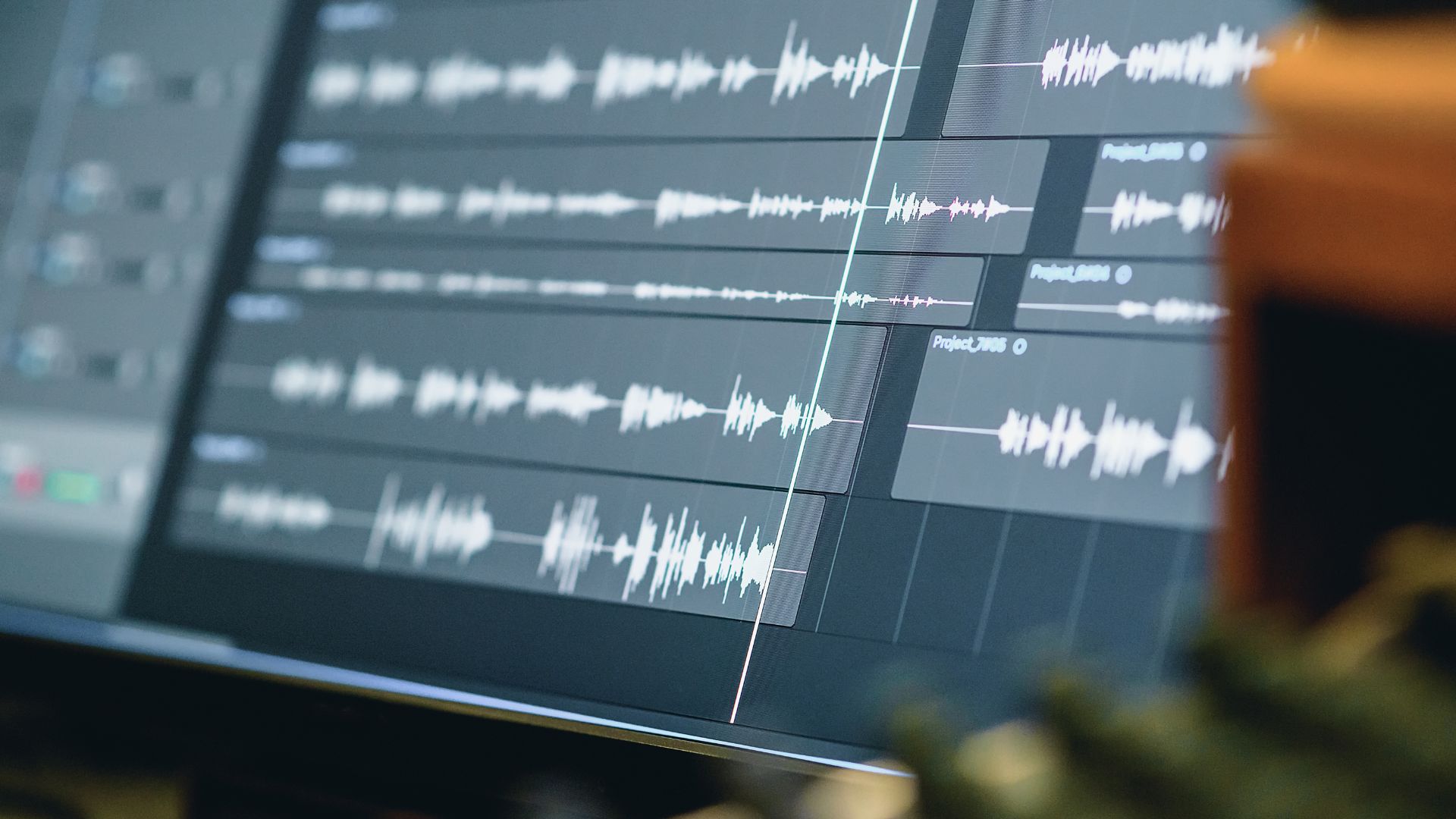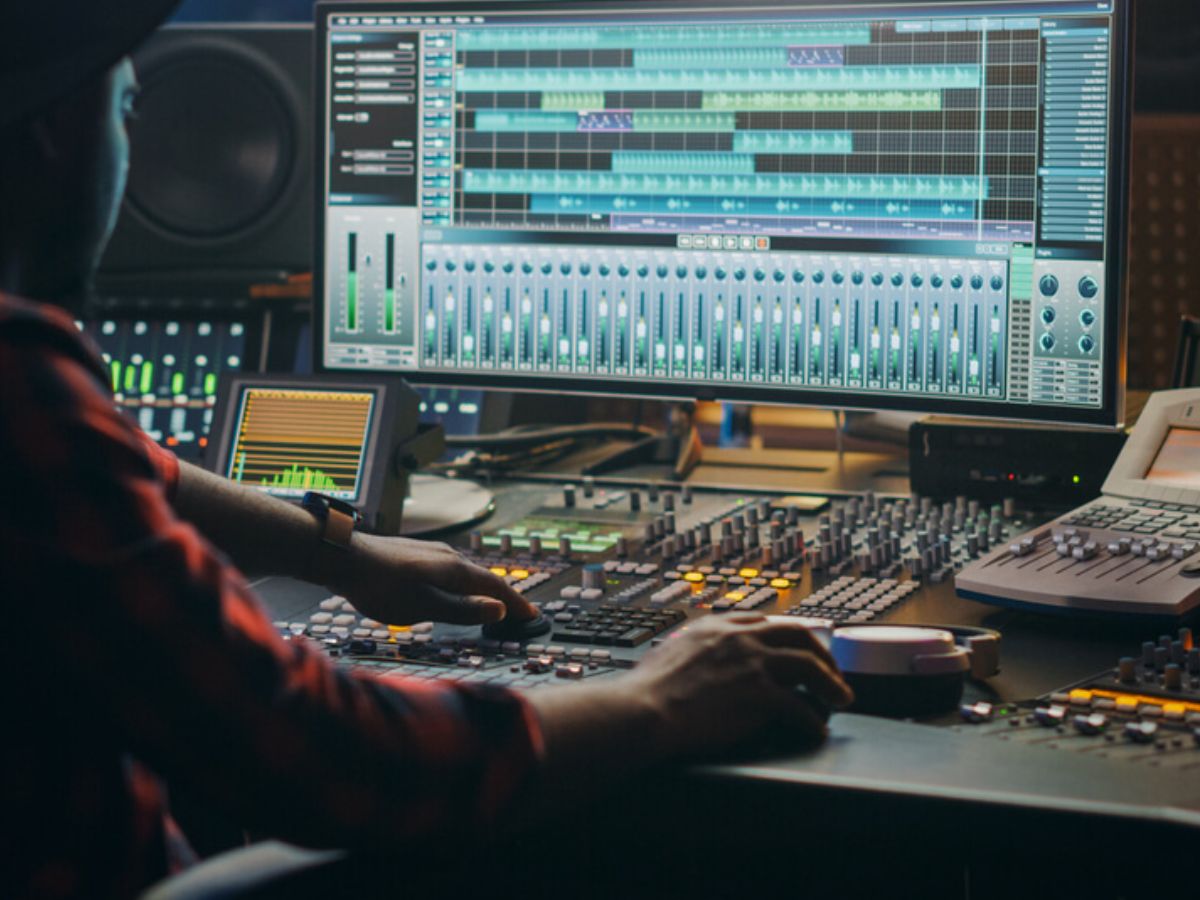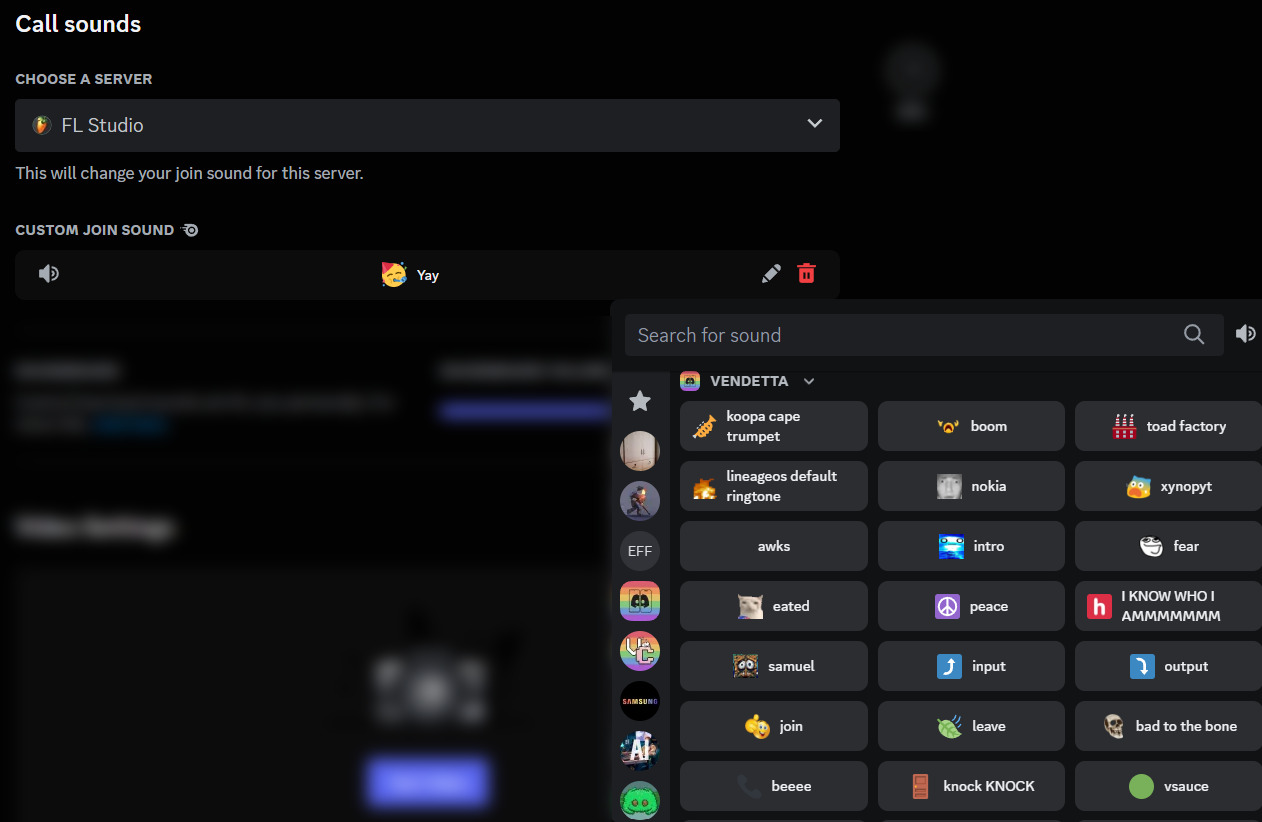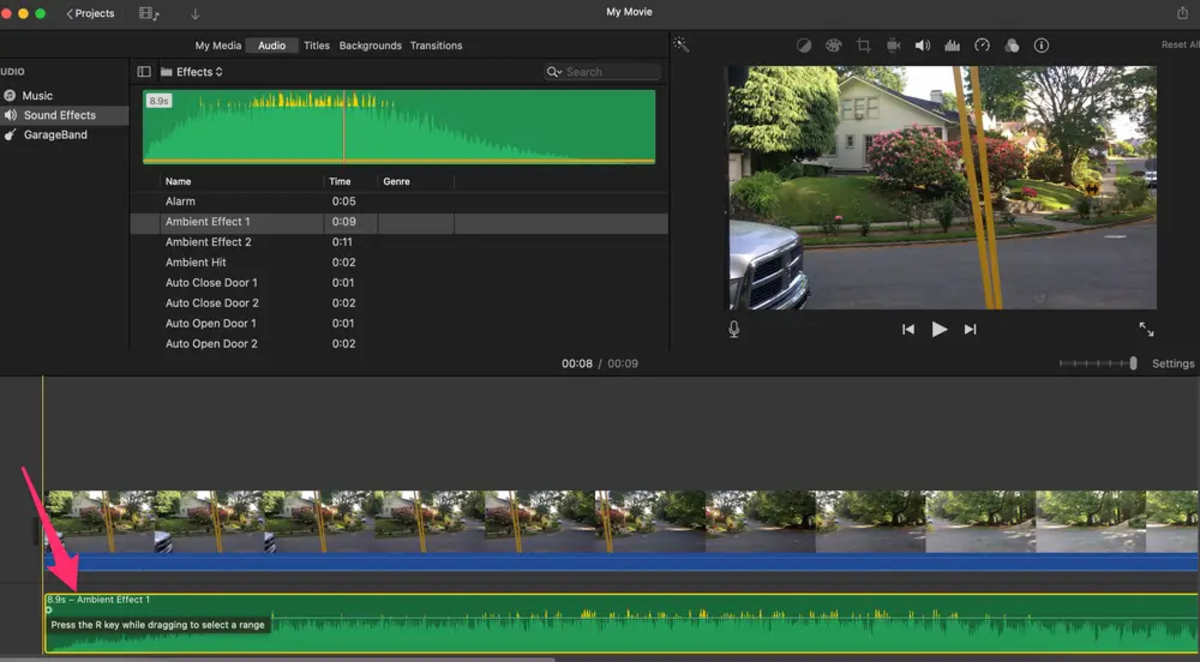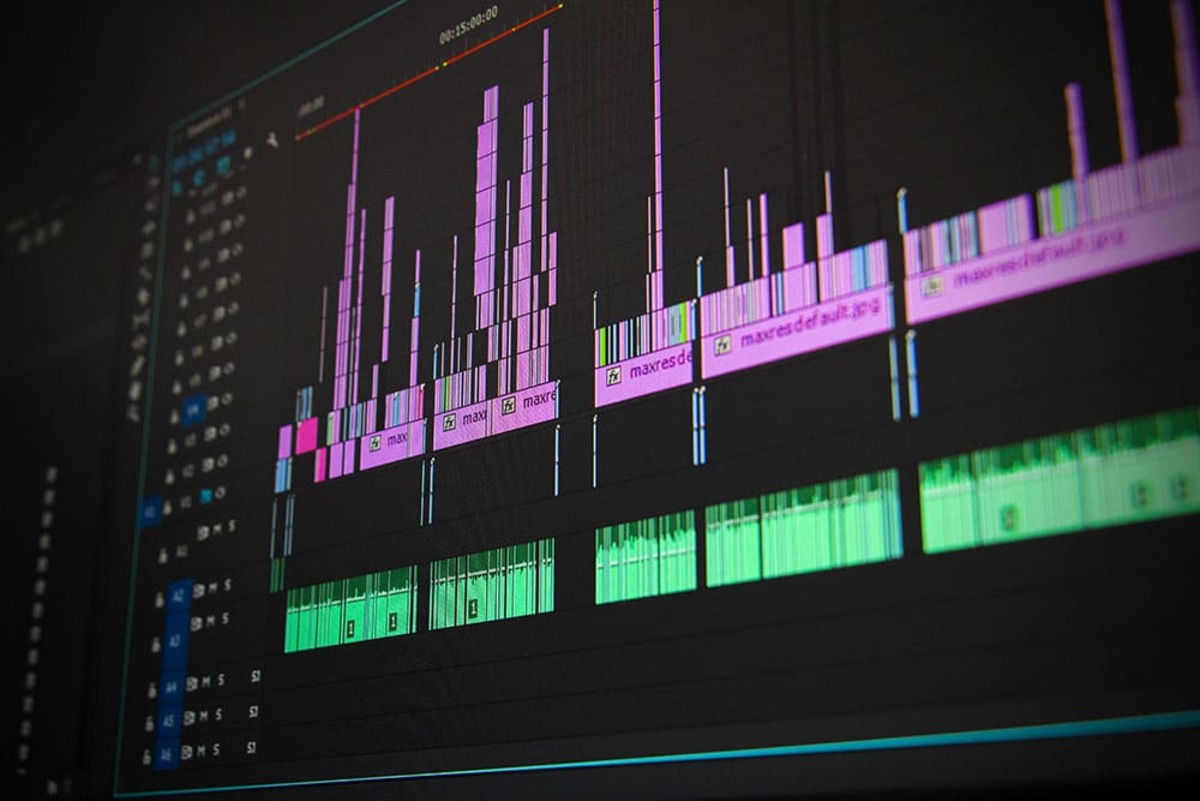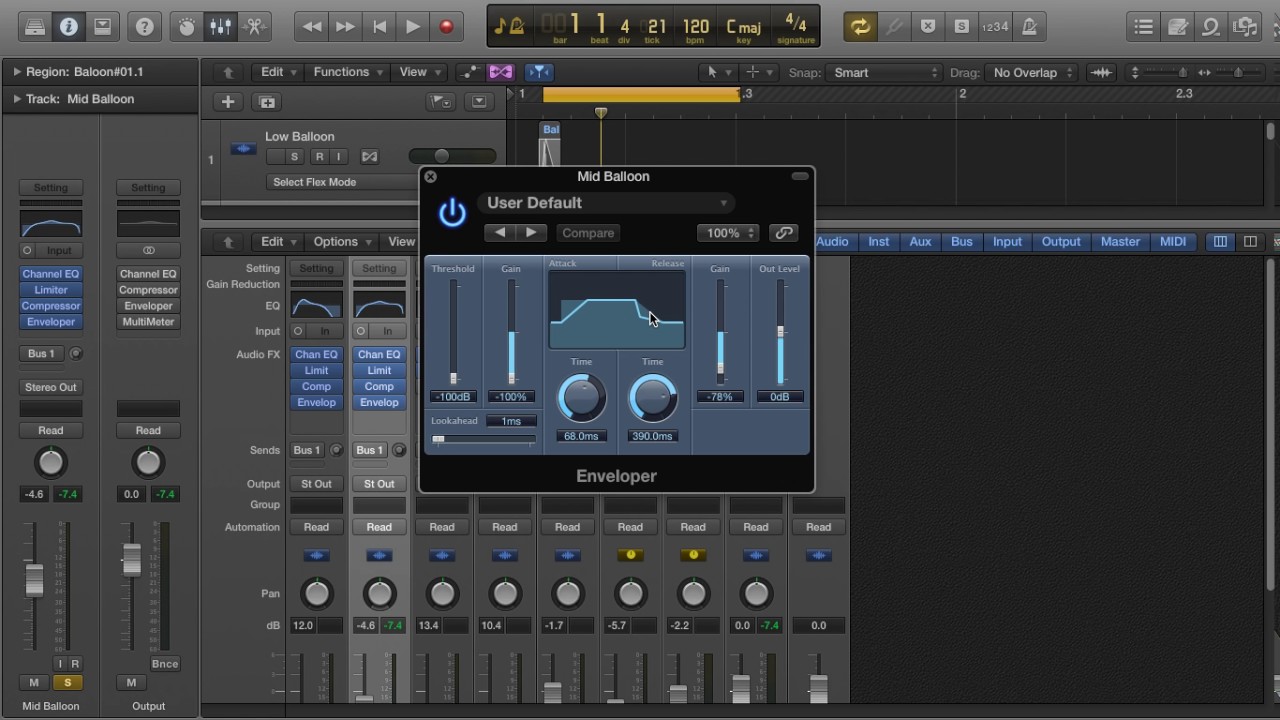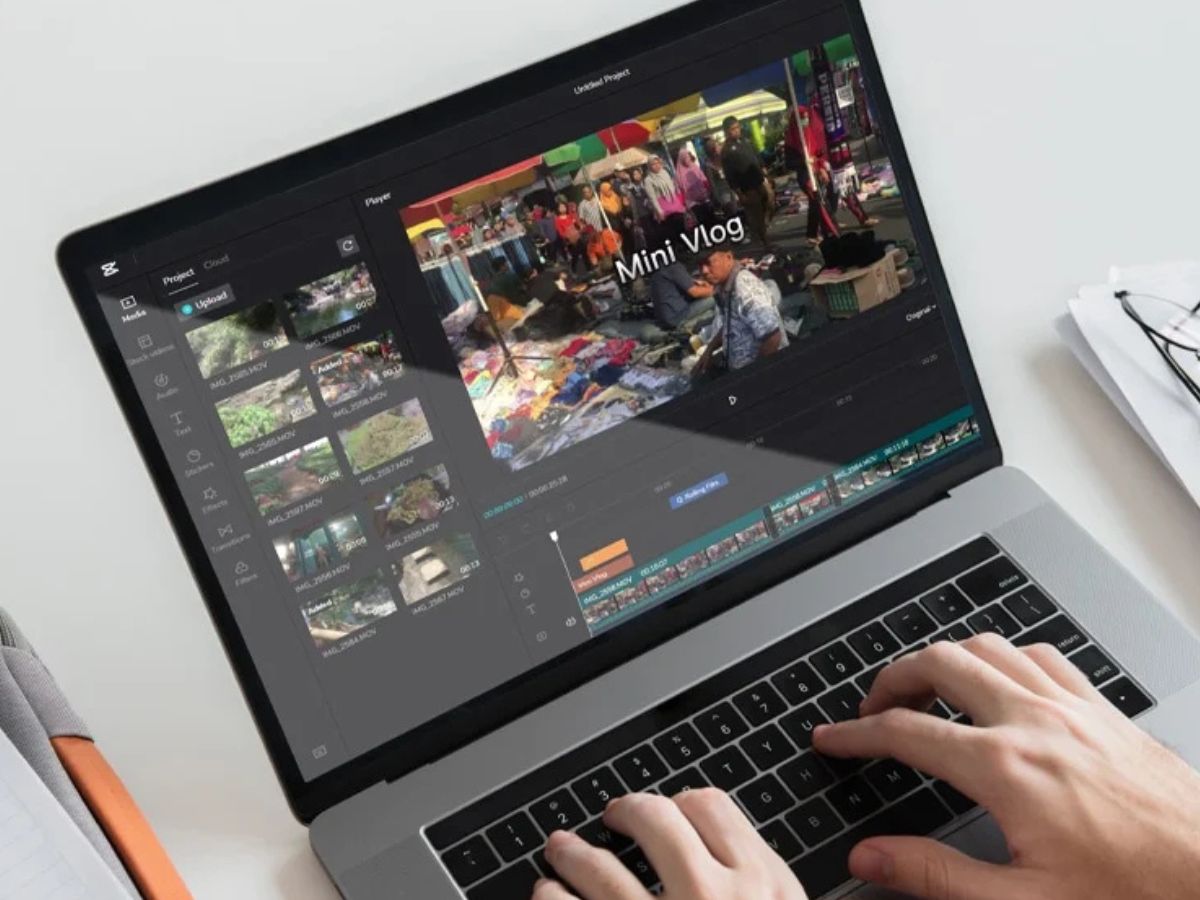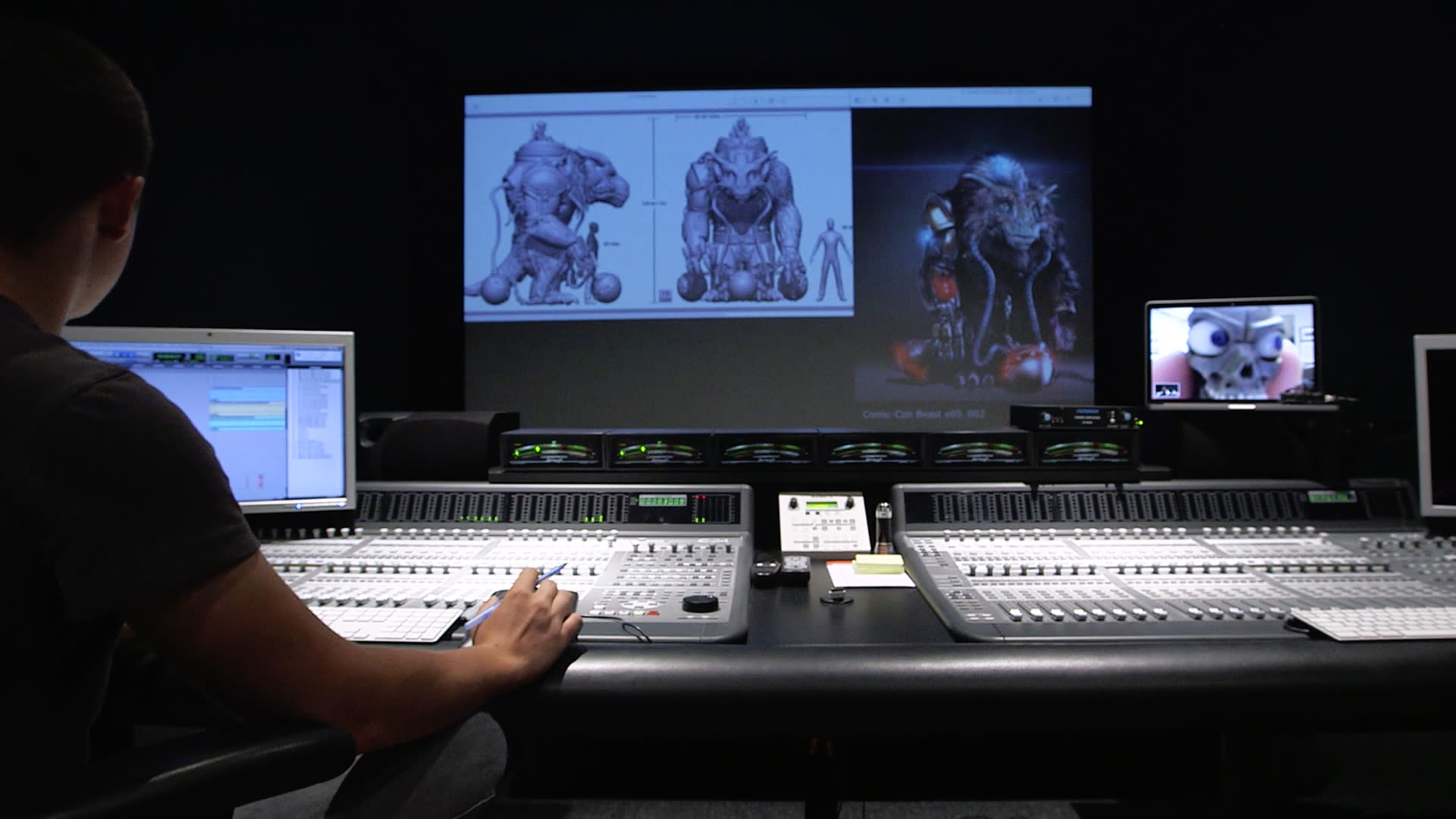Home>Production & Technology>Sound Effects>What Are Sound Effects


Sound Effects
What Are Sound Effects
Published: November 9, 2023
Learn about the importance and types of sound effects. Enhance your audio projects with the use of vibrant and realistic sound effects.
(Many of the links in this article redirect to a specific reviewed product. Your purchase of these products through affiliate links helps to generate commission for AudioLover.com, at no extra cost. Learn more)
Table of Contents
Introduction
Sound effects play a crucial role in enhancing any audio-visual experience. Whether it’s a movie, video game, or even a PowerPoint presentation, sound effects add depth, emotion, and realism to the overall experience. From the subtle rustling of leaves to the booming explosion of a building, sound effects help to create a multi-dimensional world for the audience to immerse themselves in.
But what exactly are sound effects? What makes them so important? And how are they created? In this article, we’ll explore the fascinating world of sound effects and delve into the various types, their creation process, as well as their application in different industries.
Sound effects can be defined as artificially created or recorded sounds used to enhance or emphasize specific actions, events, or moods within an audio-visual production. They serve to complement the visuals and drive the narrative by evoking certain emotions or reactions from the audience.
The importance of sound effects cannot be overstated. They add depth and richness to a production, making it more engaging and immersive. Imagine watching a thrilling action movie without the sound of explosions or gunshots, or playing a video game without the sound effects that bring the gameplay to life. It would significantly diminish the overall experience and fail to captivate the audience.
Sound effects are not limited to entertainment industries alone. They are also extensively used in fields like advertising, education, and even therapy. In commercials, sound effects are employed to capture attention, create impact, and reinforce brand messages. In educational videos, they aid in engagement and retention of information. In therapy, sound effects can be used for relaxation or to simulate specific environments for therapeutic purposes.
Creating sound effects is a highly skilled and creative process. Sound designers and Foley artists use a variety of techniques and tools to generate or capture sounds that best suit the intended purpose. This can involve recording everyday objects, manipulating audio samples, or designing sounds from scratch using digital sound libraries and specialized software.
Sound effects find application in a wide range of industries. In the film industry, they help bring scenes to life and enhance storytelling. In video games, they provide feedback and immerse players in virtual worlds. In radio and podcasting, they add layers of realism and create a compelling auditory experience. Even in live theater productions, sound effects play a crucial part in building a believable stage environment.
In this article, we will explore different types of sound effects and how they are used in various industries. We will also provide some examples to illustrate their impact and effectiveness. So, let’s dive into the world of sound effects and discover the magic they bring to our audio-visual experiences.
Definition of Sound Effects
Sound effects, often abbreviated as SFX, are artificially created or recorded sounds that are used in audio-visual productions to enhance or emphasize specific actions, events, or moods. They are designed to complement the visuals and evoke emotional responses from the audience. These sounds can range from the everyday noises we hear in our environment to more abstract and imaginative creations.
Sound effects are an essential component of any audio-visual production, adding depth, realism, and atmosphere. They have the power to transport the viewer or listener into the world being portrayed, making the experience more immersive and engaging. Whether it’s the creaking of a door, the roaring of a monster, or the explosion of a rocket, sound effects create a sense of presence and impact that enhances the overall audio-visual experience.
These effects can be categorized into several groups based on their origin and purpose. Foley effects are created in a studio setting by using various props and tools to replicate real-life sounds, such as footsteps, door slams, or glass breaking. On the other hand, synthesized effects are artificially generated sounds that do not have a direct real-world counterpart, such as laser blasts or futuristic ambiance. Additionally, there are also recorded effects, which involve capturing specific sounds in the environment or using pre-existing sound libraries to achieve desired results.
When it comes to the purpose of sound effects, they serve multiple functions in an audio-visual production. Firstly, they help to establish the setting and atmosphere of a scene or location. For example, the chirping of birds, rustling leaves, and flowing water can instantly transport the audience to a serene natural environment. Secondly, sound effects assist in providing a sense of realism and authenticity by mimicking the sounds associated with the actions or objects on screen. They make the visuals more believable and relatable to the viewer. Lastly, sound effects contribute to the emotional impact of a scene. Adding ominous music, eerie whispers, or tense heartbeat sounds can heighten the suspense and create a more immersive experience for the audience.
Overall, sound effects are an integral part of the audio-visual medium, enhancing the storytelling and capturing the audience’s attention. Without them, the visuals would feel flat and lacking in depth. They help to create a multi-sensory experience that transports the viewer or listener into the world being presented, making the content more memorable and impactful.
Importance of Sound Effects
Sound effects play a vital role in the success of any audio-visual production. They bring life, depth, and emotion to the content, making it more captivating and engaging for the audience. Here are some key reasons why sound effects are important:
Enhancing Realism and Immersion: Sound effects help to create a sense of realism by mimicking the sounds of everyday life. From the subtle background noises to the most dramatic action sequences, sound effects make the visuals more believable and immerse the audience in the story. Whether it’s the roar of a lion in a nature documentary or the screeching tires in a high-speed chase, it is the sound effects that make the scene come alive.
Eliciting Emotional Responses: Sound effects have the power to evoke emotions in the audience. They can heighten tension, create excitement, induce fear, or evoke a sense of nostalgia. For example, the haunting melody of a music box can instantly create a feeling of unease, while the triumphant fanfare can evoke a sense of victory and accomplishment. Sound effects work hand in hand with the visuals to create a powerful emotional impact.
Enhancing Storytelling: Sound effects serve as an additional tool for storytellers to convey information. They can help to establish the setting, reveal the character’s emotions, or even foreshadow events. The sound of thunder and lightning can indicate an approaching storm, or the sound of footsteps can build suspense and anticipation. By carefully selecting and using sound effects, storytellers can enhance the narrative and guide the audience’s understanding of the plot.
Providing Feedback and Guidance: In interactive media like video games, sound effects provide valuable feedback to the players. They indicate successful actions, progress within the game, or warn of dangers. The sound of a “level up” or a “game over” not only informs the player but also adds to the overall gaming experience. Similarly, in virtual reality or augmented reality applications, sound effects help to guide and immerse users in the virtual environment.
Creating Brand Identity: Sound effects can contribute to building a recognizable brand identity. In marketing and advertising, memorable sound effects can become synonymous with a particular product or company. Think about the iconic Intel jingle or the sound of a soda can opening in a Coca-Cola advertisement. These distinctive sound effects help to reinforce brand recognition and leave a lasting impression on the audience.
Overall, sound effects are an essential component of any audio-visual production. They enhance realism, elicit emotions, enhance storytelling, provide feedback, and create brand identity. Without sound effects, the visual experience would feel incomplete and lack the immersive quality that truly engages the audience.
Types of Sound Effects
Sound effects can be categorized into various types based on their origin, purpose, and characteristics. Each type serves a specific function and contributes to the overall audio-visual experience. Here are some common types of sound effects:
1. Foley Effects: Foley effects are sound effects created manually in a studio setting. They involve the use of various props and tools to replicate real-life sounds. Foley artists recreate sounds like footsteps, doors opening and closing, glass breaking, or even the rustling of leaves. These effects add a sense of realism and authenticity to the visuals by accurately reproducing the sounds associated with the actions or objects on screen.
2. Recorded Effects: Recorded effects are sound effects captured from the real world or sourced from pre-existing sound libraries. They can include sounds like thunderstorms, car engines, wind blowing, or animal noises. These effects are often used to create specific environments or enhance the ambiance of a scene. Recorded effects can be manipulated or mixed with other sounds to achieve the desired effect.
3. Synthesized Effects: Synthesized effects are artificially generated sounds that do not have a direct real-world counterpart. They are created using synthesizers, samplers, or other digital sound processing tools. Synthesized effects can be used to produce futuristic sounds, sci-fi elements, or abstract sounds. They offer a wide range of creative possibilities and are often employed in genres like science fiction, fantasy, or animation.
4. Ambience Effects: Ambience effects are used to create or enhance the background noise or atmosphere of a scene. They include sounds like crowd chatter, birds chirping, water flowing, or wind blowing. Ambience effects add depth and realism to the audio by simulating the environmental sounds that one would typically hear in a specific setting. They help to establish the mood and setting of a scene, making it more immersive for the audience.
5. Impact Effects: Impact effects are used to create sounds associated with impacts or collisions. They can range from simple impacts like punches or slaps to more intense and dramatic effects like explosions or crashing vehicles. Impact effects contribute to the overall action and intensity of a scene, adding weight and impact to visual elements. They are crucial in genres such as action films, video games, or sports-related media.
6. Transition Effects: Transition effects are used to smooth transitions between scenes or to indicate changes in time or location. They can include sounds like whooshes, swishes, or fades. Transition effects provide a seamless flow between visuals and help to maintain the continuity of the narrative. Whether it’s a simple scene-to-scene transition or a time jump in the storyline, these effects create a smooth and cohesive audio-visual experience.
These are just a few examples of the types of sound effects commonly used in audio-visual productions. Sound designers and editors have a wide range of tools at their disposal to create or manipulate sounds based on the requirements of the project. The selection and use of appropriate sound effects contribute significantly to the overall quality and impact of the audio-visual experience.
Creating Sound Effects
The process of creating sound effects is a creative and skillful endeavor that involves various techniques and tools. Sound designers, Foley artists, and audio technicians employ a range of methods to generate or capture sounds that enhance the visuals and immerse the audience. Here are some common approaches to creating sound effects:
1. Foley Artistry: Foley artistry is a technique in which sound effects are created manually using props and tools. Foley artists recreate the sounds of footsteps, clothing rustling, doors opening and closing, or any other sound associated with actions or objects on screen. They use various objects and surfaces to achieve the desired effect, such as walking on different types of flooring to simulate different textures. These realistic sounds add a sense of authenticity and tactile quality to the visuals.
2. Field Recording: Field recording involves capturing sounds from the real world using portable recording equipment. Sound designers venture into different environments to capture specific sounds or ambient noises. They might record sounds of nature, urban environments, or even specialty sounds like machinery or animal calls. Field recordings provide a library of authentic sounds that can be manipulated or blended with other elements to create unique and tailored sound effects.
3. Experimentation and Manipulation: Sound designers often experiment with various techniques and manipulate existing sounds to create unique effects. They may use audio editing software to modify and combine different sounds, applying techniques such as time stretching, pitch shifting, reversing, or equalization. By experimenting and pushing the boundaries, they can create sounds that evoke specific emotions or are entirely unique to the project.
4. Sample Libraries and Virtual Instruments: Sound designers have access to a vast array of sound libraries and virtual instruments containing pre-recorded or synthesized sounds. These libraries can include everything from everyday objects to special effects and musical instruments. By using these resources, sound designers can quickly find and incorporate the right sound effects into their projects, saving time and effort in the creation process.
5. Sound Synthesis: Sound synthesis involves generating sounds electronically using synthesizers, samplers, or digital audio workstations. Sound designers can create completely original sounds that do not exist in the real world, such as futuristic sci-fi effects or abstract atmospheric textures. Through the manipulation of waveforms, filters, modulation, and other parameters, they can shape and sculpt unique sounds to fit the desired purpose.
Creating sound effects requires expertise, creativity, and attention to detail. Sound designers carefully consider the visual context, the emotional impact desired, and the technical aspects of the project to craft sound effects that enhance the overall experience. They constantly innovate and explore new techniques to push the boundaries of what is possible in sound design, resulting in impactful and immersive audio-visual productions.
Using Sound Effects in Different Industries
Sound effects find application in a wide range of industries, beyond just entertainment. They play a crucial role in enhancing the audio-visual experiences across various sectors. Let’s explore how different industries utilize sound effects:
1. Film and Television: The film and television industry heavily relies on sound effects to bring scenes to life and create a sense of realism. From subtle ambient sounds to explosive action sequences, sound effects complement the visuals and immerse the audience in the storytelling. Whether it’s footsteps on different surfaces, the sound of a car engine revving, or the rustling of leaves, sound effects play a vital role in enhancing the overall audio-visual experience.
2. Video Games: Sound effects are integral to the gaming experience, providing feedback and enhancing immersion. They help players to navigate through virtual worlds, indicate success or failure, and create a sense of excitement or danger. From the realistic sounds of weapons and explosions to the ambient noises in game environments, sound effects in games make the experience more engaging and interactive.
3. Advertising and Marketing: In the advertising industry, sound effects are used to capture attention, create impact, and reinforce brand messages. The right sound effect can draw the viewer’s attention to a specific product or evoke emotions that align with the brand’s identity. Whether it’s the sound of a fizzy drink being poured over ice, a catchy jingle, or the sound of a car engine roaring, sound effects add an extra layer of engagement to commercials and marketing campaigns.
4. Theatre and Live Performances: Sound effects play a crucial role in live performances, such as theater productions, concerts, and even theme park shows. They help to create immersive environments, enhance storytelling, and provide audio cues to actors and performers. From thunder and lightning effects to dramatic musical stings, sound effects enrich the live performance experience, bringing the stage to life for the audience.
5. Radio and Podcasting: Sound effects are essential in audio-only mediums like radio and podcasting. They help to create a sense of place, establish atmosphere, and enhance storytelling. Whether it’s an interview, a narrative podcast, or a radio play, sound effects add richness and depth to the audio experience, painting vivid mental pictures for the listeners.
6. Education and Training: Sound effects are widely used in educational and training videos to aid in engagement and retention of information. By incorporating relevant sound effects, such as the sound of a heart beating during a biology lesson or the buzz of a beehive in an ecology tutorial, educational content becomes more captivating and memorable for learners.
These are just a few examples of the diverse industries that benefit from the use of sound effects. Sound effects are a powerful tool in creating immersive and impactful audio-visual experiences, enhancing storytelling, providing feedback, and capturing audience attention across various sectors.
Examples of Sound Effects
Sound effects are used extensively in various forms of media to enhance the audio-visual experience. Let’s explore some examples of sound effects commonly encountered in different industries:
1. Explosions: Explosions are a staple in action movies and video games. The booming sound of an explosion creates a sense of intensity and impact, immersing the audience in thrilling moments.
2. Footsteps: Footsteps sound effects are used in films, television shows, and video games to create a sense of presence and movement. The sound of footsteps on different surfaces, such as gravel, wood, or carpet, adds depth and realism to scenes.
3. Gunshots: Gunshots are commonly used in action movies, war documentaries, and video games. Different firearms produce distinct sounds, which contribute to the overall immersion and authenticity of the storytelling.
4. Creature Sounds: In fantasy or science fiction genres, creature sounds are crucial in bringing fictional characters to life. From the terrifying roar of a monster to the chirping of imaginary creatures, these sound effects play a vital role in creating fantastical worlds.
5. Vehicle Sounds: The sounds of cars, motorcycles, or airplanes are used to enhance action sequences or convey a sense of movement. The revving of engines, screeching of tires, or the zooming sound of a passing vehicle adds excitement and realism to the visuals.
6. Weather Effects: Thunderstorms, raindrops, and wind are often used to create atmosphere and set the mood. The sound of thunder can add tension, while the pitter-patter of raindrops can create a soothing or melancholic ambiance.
7. Sci-Fi Effects: In science fiction films, futuristic sound effects are essential for creating a sense of technology and otherworldliness. Laser blasts, robotic sounds, and futuristic beeps and boops help to transport the audience into the imaginative realms of science fiction.
8. Horror Effects: Horror movies rely heavily on sound effects to build suspense and evoke fear. Eerie whispers, ominous footsteps, and blood-curdling screams contribute to a nerve-wracking and eerie atmosphere.
9. Musical Stings: Musical stings are short, sharp, and impactful sound effects often used in television shows, commercials, and game shows. They serve to emphasize a specific moment or highlight important transitions in the content.
10. Environmental Sounds: Creating a realistic environment is essential in many forms of media. From the buzzing of insects in a jungle to the sounds of a bustling cityscape, environmental sounds help to transport the audience to different locations and create a sense of place.
These are just a few examples of the countless sound effects used in various industries. Sound effects add depth, realism, emotion, and impact to audio-visual productions, making them more immersive and engaging for the audience.
Conclusion
Sound effects are a vital component of any audio-visual production, enhancing the experience and immersing the audience in the storytelling. From creating a sense of realism to evoking emotions, sound effects play a crucial role in captivating and engaging the audience across different industries.
Whether it’s the booming sound of explosions in action movies, the footsteps that bring characters to life, or the futuristic sounds of sci-fi realms, sound effects enhance the visuals and create a multi-sensory experience for the audience.
From film and television to video games, advertising, theater, and more, sound effects find application across a wide range of industries. They establish settings, evoke emotions, enhance storytelling, and provide feedback, enriching the audio-visual experience.
Creating sound effects is a creative and skilled process that involves techniques such as Foley artistry, field recording, experimentation, and sound synthesis. Sound designers and Foley artists employ various tools and technologies to generate or capture sounds that align with the requirements of the project.
As technology advances, the possibilities for sound effects continue to expand. The use of sound effects in virtual reality, augmented reality, and emerging forms of media is opening up new avenues for immersive experiences.
Whether it’s the explosive action sequences in movies, the realistic environmental sounds in video games, or the attention-grabbing jingles in commercials, sound effects have become an integral part of the audio-visual landscape.
In conclusion, sound effects add depth, emotion, realism, and impact to audio-visual productions. Their importance cannot be overstated, as they enhance the audience’s experience and create a more captivating and immersive world. So next time you sit down to watch a movie or play a video game, take a moment to appreciate the artistry behind the sound effects that bring the visuals to life.

